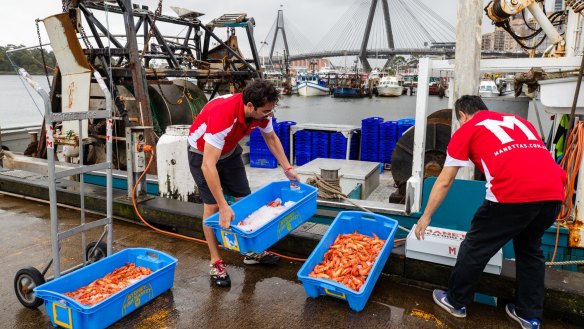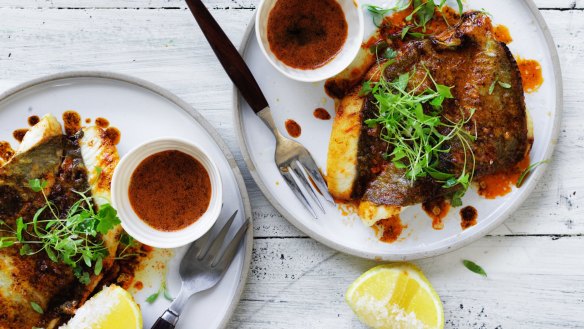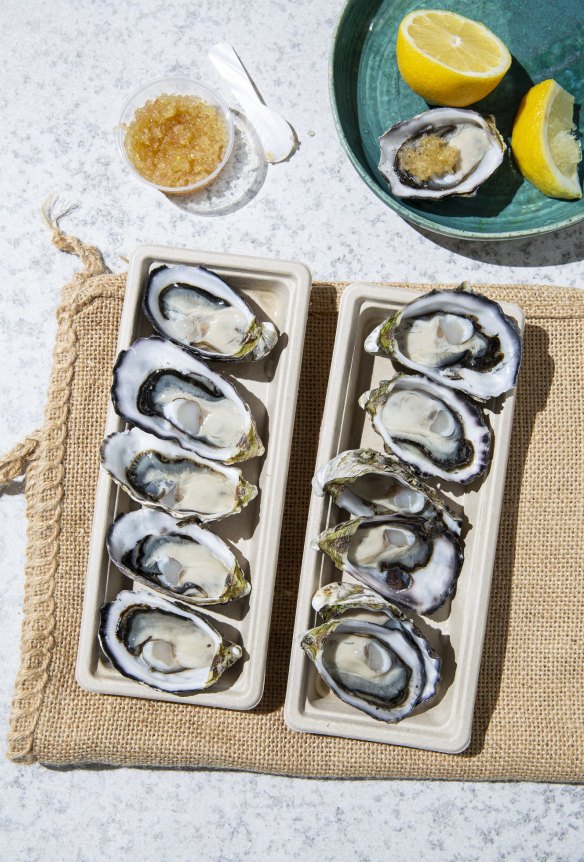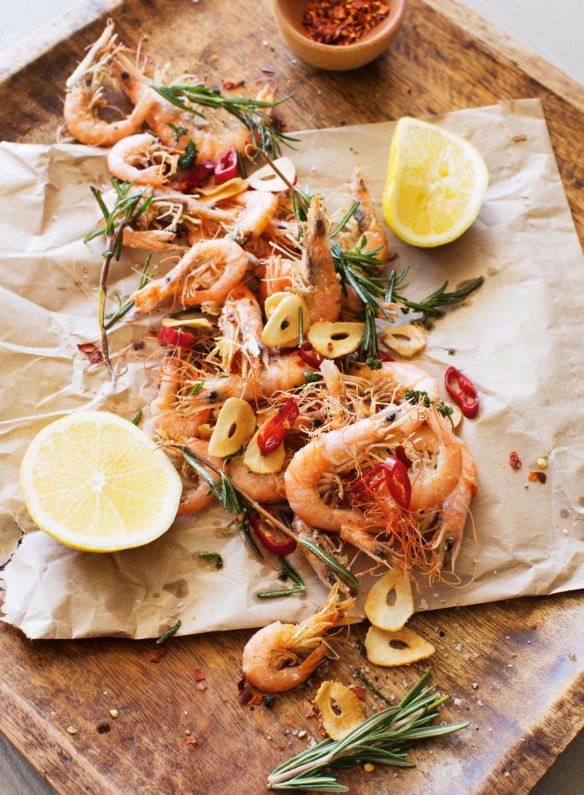Budget-friendly fresh seafood swaps as suggested by fishmongers

- Budget-friendly meat and fresh produce swaps from the experts (plus recipes)
- Crisp-fried school pawns recipe
- Adam Liaw's pan-fried John dory with smoked paprika butter
The perfect storm of wild weather, COVID-related labour shortages and rising overseas demand have created "unheard of" price hikes for some seafood.
There's a huge shortage of everything at the moment, explains Peter Manettas, founder of Sydney retailer Manettas Seafood, which delivers across New South Wales and Victoria.

Tasmanian salmon has been heavily impacted. Over the past 12 months, higher transportation costs made supply difficult for salmon-producing regions in Norway and Chile. As a consequence, increased demand for Australian salmon pushed the export price up by 46 per cent. The trickle-down effect saw widespread domestic salmon shortages and price rises up to 40 per cent since the beginning of the year.
"In all honesty, I believe this is the highest priced salmon I've ever seen, but the price rises aren't across the board," Manettas says.
New Zealand fish are in plentiful supply and top quality at the moment, Manettas says, recommending wild-caught snapper or John dory for shoppers seeking fish to feed the entire family.

You can reel in a whole 2 kilogram snapper for $48.99 at Tomorrow's Fish at the Sydney Fish Market. A whole 800-gram John dory is even cheaper at $25.60.
"John dory is delicate and sweet, making it the perfect choice for battered fish and chips or grilled as a delicious fillet," Manettas says.
"And while everyone knows of snapper fillets, a whole snapper can come as large as four to five kilograms.

"So the ability to turn around and put on a big fish as a centrepiece is still available at a reasonable price. People just need to go outside the box sometimes."
Whole fish is an economical choice at the seafood market, costing less per kilogram than fillets. The idea of taking on the scaling, deboning and filleting can be an intimidating task for some, but your fishmonger can assist with the trickier parts.
Sydney Fish Market's resident seafood expert and tour guide Alex Stollznow says there are plenty of underrated alternatives should you find your favourite fish has jumped in price.
"Instead of snapper, you can try ocean perch. It's locally caught pretty much wherever you are in Australia, and they're sweet and light and briny," Stollznow says.
"They have a fine flake, so they can be substituted in any recipe and usually retail in the mid-to-low teens per kilogram for a whole fish."
Stollznow also recommends trying gurnard instead of flathead: "The fillets look identical, and it can be cooked exactly the same as you would your flathead," he says.
"But on a day where flathead fillets are at $40 a kilogram, gurnard will retail for $16 [per kilogram]."
Sydney rock oysters can be hard to come by after the heavy rain in NSW, but Pacific oysters offer a good value alternative at around 50-70¢ cheaper per oyster.
"Australia is a big place and the good thing is almost all Pacific oyster-farming regions were unaffected by the rainy weather," Stollznow says.
Julius Lobb, the business direction manager of Melbourne wholesaler Clamms Seafood, says Pacific oysters are at their peak during the colder months.
"Pacific oysters are simpler in flavour. They're more about the muscle, the creaminess and the brine," Lobb explains.
The price of large, wild-caught prawns can become prohibitive for some, as rain limits the number of crews that can get out on the water. Stollznow says to keep an open mind and consider school prawns instead, which sell for around $23 per kilogram.
School prawns are very small, wild-caught marine or estuarine prawns that are found along the east and south coasts of Australia.
Green (raw) school prawns are best lightly floured, fried quickly in hot oil and eaten whole, with their shells on.
"They're Australia's sweetest and most tender prawn," Stollznow says.
"They're also around a third of the price of a jumbo king prawn. I think they're best deep-fried whole, and eaten like popcorn."
The secret to scoring the day's best deal, however, always lies with your local fishmonger.
"Speak to your fishmonger, that's the best place to start," Lobb says.
